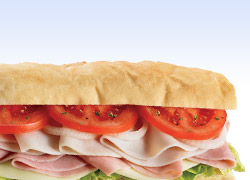One of the selling points of Blue Horse is the experience of our core group.
Consider that our Director of Media, Narkis Erlichman comes to us having worked at Burnett in Chicago, at McCann in New York and at Optimedia in Seattle.
Laura Rodriguez worked at DDB Needham and McCann in Los Angeles. Our pr folks, Steve Johnstone (winner of the Dorothy Thomas Black Award last year) and Susie Falk both have extensive backgrounds in their category. As does our president Tom Thiede and partner Bill Sheahan.
And if you get past all that, I spent twenty years at Leo Burnett and then some more at EuroRSCG Tatham.
One would hope that all that firepower would be invaluable in terms of strategic thinking about your brand. And you would be right.
But it also comes in handy when you have a quick turnaround situation on your hands. Like our good client Wal-Mart. They are partnering with the Milwaukee Wave soccer team to develop an abandoned piece of property in Cudahy. Naturally, things get contentious and we wanted to make sure that the supporters of the project were well represented at the planning commission meeting.
So Steve Johnstone comes to Bob Welke and together they come up with a direct mailer that is both an invitation and a way to visibly show support at the meeting. The copy is written on a Friday afternoon and by the following Wednesday, it’s been approved, printed and mailed.
And hundreds, yes–hundreds, of people show up at the meeting, cards in hand to support the project.
This was a low-cost, short-turnaround and creative answer to a difficult situation. And while it took two meetings to do it, Wal-Mart finally got the green light.
That’s what “hands on help from experienced people” actually means. It means you get answers that work. As we say in our mission, our job is not to make ourselves look good. Our job is to make our clients look good. So we don’t have to do TV commercials when postcards will work, especially postcards that double as on-site signage.
Our thanks to our good friends at Wal-Mart for giving us this opportunity.
 Digg it?
Digg it?


 Posted by Bob Welke
Posted by Bob Welke 

